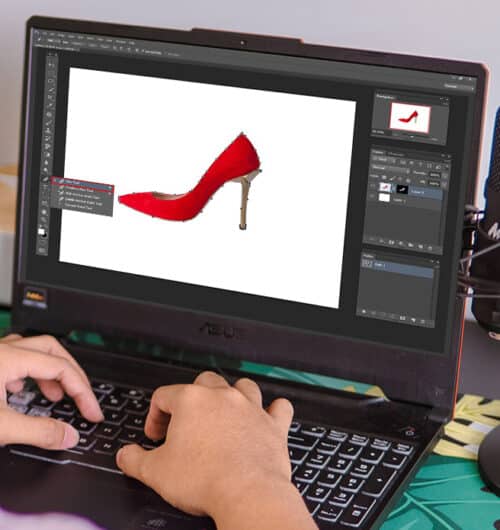Responsive design is a web design and development technique that creates a website or system that works according to the size of a user’s screen. It will optimize a user’s browsing experience by creating a great, flexible and responsive web page, optimized for the device that is accessing it and give them a perfect browsing experience.
According to recent studies,
Responsive design isn’t just about making everything fit in different screen sizes, it's also about adapting to the capabilities of the device hardware and web browser as well as the device resolution according to the era.
Benefits of Responsive Web Design
1) Increasing your reach to smart devices
Increasing use of the internet of web applications on smart devices bias has been the driving force behind web development. Traditionally druggies would be diverted to a device-specific website to Tablet deals are anticipated to get increased in future. This means that responsive design has been so important for those looking to optimize their online content. Indeed, some Byte9 spots are formerly passing up to 55 businesses from smart devices.
2) Increase sales and conversion rates

Responsive web design is that the user has an advanced point experience as there's no need for redirection, use of standardized Style Sheets (CSS) over devices and concentrated design approach will also produce a consistent look and feel for your user.
3) Analytics and reporting
A single responsive site means that you no longer have to track user journeys, conversion courses, and redirections between your websites. Site analytics tools for example Google Analytics are now optimized to address Various devices and responsive reporting. All of your tracking and analytics will continue to work into a single report, allowing for easier management.
4) Increase your visibility in search engines

Responsive Design means you can manage one website with a single set of hypertext links; therefore reducing the time wasted in maintaining your website. This allows you to focus on link outreach with a merger Search Engine Optimisation (SEO) strategy. SEO campaigns can be time-consuming and costly, but by creating a responsive website, all of your efforts can be focused on a single website across devices.
Content is very important in SEO, good quality content which is regularly put on the website improves your search engine ranking page positioning, and the advantage of responsive design is that fewer resources can be wasted in low-level duplication of content over the website.
5) Mobile-first Web Design
Mobile-first web design means designing the mobile website first and which will work up to the desktop level version. There are many reasons why this approach works well. It’s easier to scale up the mobile version of web design than it is to scale down the desktop version. Mobile-first web design helps to reevaluate what visual device the user is using and functionally necessary.

Designing a website as a mobile-first responsive site designer to ask some important questions because there is less screen real estate to work with for your business.
Here are the questions you need to be asked:
6) Popular Web Browsers
Responsive web design is about giving a seamless experience on any smart device, and since different web browsers render web pages in different methods, websites must be examined to ensure that they’re compatible with a numerous mobile screen and desktop web browsers.
Even though making a website scale to the correct responsiveness is primarily the responsibility of a web developer, it’s the web designer that decides exactly how a responsive website will adapt to different screen sizes in order to create an optimal user experience.
Here’s a worldwide breakdown of web browser market share for mobile and desktop.
Responsive Design Best Practices
1) Eliminate Friction
A mobile-first approach to responsive web design will help designers evaluate what’s really important in order for the user to achieve their main aim & objective.
you can start thinking about secondary objectives and the micro-interactions, user flows, and CTAs (calls to action) that make those viewers' objectives achievable. What’s more important is that you can focus on the primary objectives first and eliminate any unnecessary friction that aids neither the primary nor the secondary objectives.
A primary objective could be the purchasing of a product, whereas the second objective could be signing up for a newsletter (which could lead to increased sales).
2) Design for mobile device
Responsive web design is quite tricky in the sense that users will interact with the desktop website through clicks but the mobile version is through taps and swipes. There are physical differences between both screens.
Desktop users typically have their devices on a surface, whereas mobile users hold their devices in their hands. These differences importantly change the way mobile UI designers design tap targets and other important UI elements with which users interact.
3) Responsive Breakpoints
Not every user will have their desktop browsing. This means that while designers need to consider the responsive breakpoints of the smart devices that viewers are using, they also need to think about what happens in between those breakpoints.
Responsive breakpoints should be used to “reflow” the layout and content to different devices, but to account for all the sizes in between, layouts required to be otherwise fluid (which naturally adapt/stretch as the browser resizes).
Tips for designing fluid/adaptive layouts:
Percentage units will let elements be fluid.
Setting minimum and maximum widths or height can enable the “but don’t go smaller/bigger than this” matter.
SVG image formats can be scaled up and down without losing the quality, and are resolution-independent.
3) Responsive Typography
Although modern websites are rich in visuals, still web design is all about shaping written information. Content works best Therefore, typography, as a prime tool to serve it, is increasingly important.
Typography can be tricky. You need to invest in responsive typography. It's important as any other key element of a responsive website.
The good news is, even though responsive typography is relatively new and there are no standards or one-size-fits-all solutions, it is still easy to work with it. There are different approaches in the wild that you can try and see what works best for your web development
Ways to Create Responsive Typography:
One of the popular and widely acknowledged ways to create scalable typography is to use well-supported browser features, which are basic algebra, and automation through Sass. Making the most out of simple mathematical formulas, for example, linear equation definition and CSS calc(), you can easily bring to life the trendline equation and ensure typography smoothly scales with your layout. If you know how to use Sass, you can automate it simply by using a code snippet. Another method is to use viewport units. These relatively new CSS features are easy to use. Whatever way you choose, make sure your responsive typography provides the best readability and viewer experience across devices.
5 Top Responsive Web Design Testing Tools
1) Responsinator
Responsinator takes in a URL and then outputs a sequence of smart device mockups with the web page rendered in them so you can get an idea of how the page layout will be experienced by your viewer on various devices.
2) Responsive
A useful feature this tool has is it gives you keyboard shortcuts. This is handy if you like quickly switching back and forth between various device previews of the screen.
3) Viewport Resizer
This useful bookmarklet simply allows you to resize your browser to a specific dimension, e.g. the dimension of an iPhone 12, your desktop screen, or any one of Viewport Resizer’s 47 screen size presets.
4) ResizeMyBrowser
This tool lets you resize your browser based on any of the 15 default sizes that match up with some famous devices. You can also set your own custom dimensions, and it also tells you what your current browser window size is according to your preference.
5) Screenfly
Screenfly takes in any URL and then gives you a preview of your web page under various preset screen dimensions.
Conclusion
Responsive design lets you stay updated with the trend. As the demand for smart mobile, internet, and apps is burgeoning, several important implications must be addressed by the business; development and maintenance costs, visibility in search engines, and better conversion rates. With the increase in smart device use exploding, responsive design is key to keeping up ahead of your competitors.






